The Bill Williams River
Welcome to the Lower Colorado River! Have fun exploring the ecosystems from the uplands to the marshes of this desert riparian landscape. Click on each bird to learn more about it.

Vermilion Flycatcher
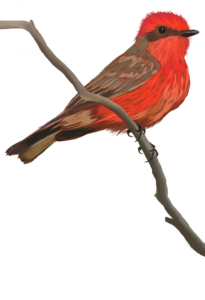
Yellow-billed Cuckoo
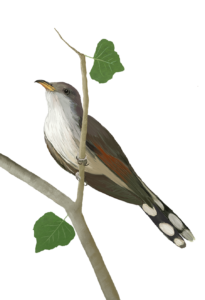
The Yellow-Billed Cuckoo is a migratory bird that winters in Central and South America and migrates north to breed in North America. It is often referred to tis the "rain crow" because of its reputation to call before summer storms. The Western Distinct Population Segment (DPS), which breeds throughout the Southwest and along the Lower Colorado River is threatened due to habitat loss.
Sonoran Yellow Warbler
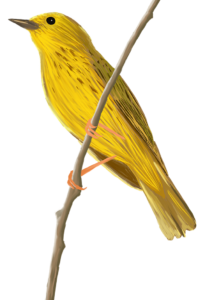
Gila Woodpecker
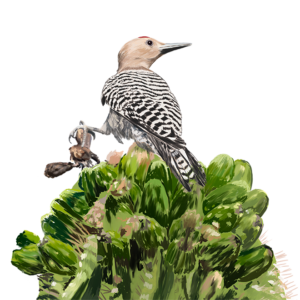
The Gila Woodpecker is a charismatic woodpecker found in the Southwest Mojave and Sonoran deserts along riparian corridors or the uplands adjacent. They most often drill cavities in the saguaro cactus where they nest, although sometimes they make their home in trees as well. Their cavities are used by secondary cavity nesters such as Ash-throated Flycatchers and Elf Owls in following years, thereby creating crucial nesting habitat for other desert birds.
Arizona Bell's Vireo
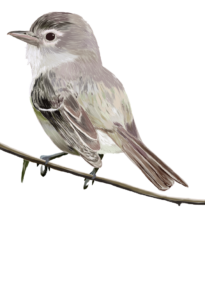
The Arizona Bell's Vireo is a subspecies of the Bell's Vireo found in the Southwest primarily in California and Arizona. They migrate from Central America and Mexico and nest in desert woodlands (i.e., mesquite) on riparian edges.
Summer Tanager
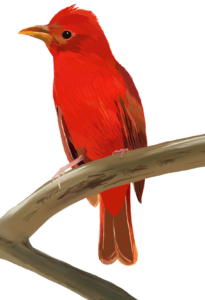
Gilded Flicker
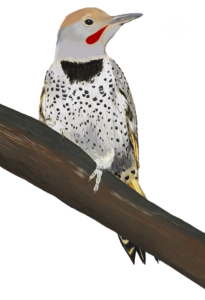
The Gilded Flicker is severely declining desert woodpecker along the Lower Colorado River. They excavate cavities in saguaros to rear their young.
California Black Rail
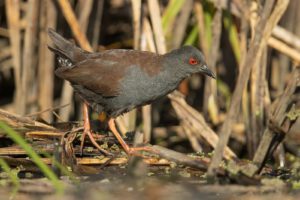
The California Black Rail is a subspecies of the Black Rail found in southern and central California and in Arizona along the Lower Colorado River. One of the most difficult birds to actually see as they spend the majority of their life in dense marshland, rarely retreating. The Black Rail is in overall decline and on the Partners in Flight Red Watch List.
Western Least Bittern
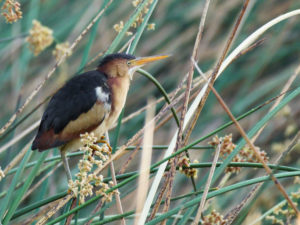
The Western Least Bittern is a subspecies of the Least Bittern, a small, elusive marsh bird with a fondness for making its home in cattail marshes. Like other marsh birds, the Least Bittern is difficult to see and will freeze perfectly still to blend in with the reeds. Populations have been declining due to loss of wetlands.
Photo by Bobby Wilcox
Yuma Ridgway's Rail
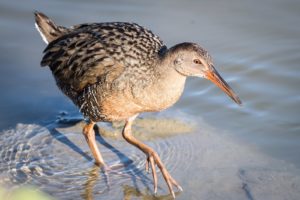
The Yuma Ridway's Rail is a subspecies of the Federally Endangered Ridgway's Rail, with the Yuma subspecies found along the Lower Colorado River into Mexico. They have severely declined due to river alteration from management practices regulating flooding.
Southwestern Willow Flycatcher
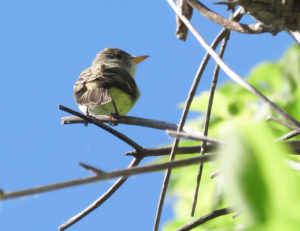
The Southwestern Willow Flycatcher is a subspecies of the Willow Flycatcher throughout the Southwest and along the Lower Colorado River. Due to loss of native riparian habitat and expansion of Brown-headed Cowbirds (which hijack their nests by laying their own eggs in the flycatchers nests), they have been listed as Federally Endangered since 1995.
Photo by Jarrod Swackhamer
Elf Owl
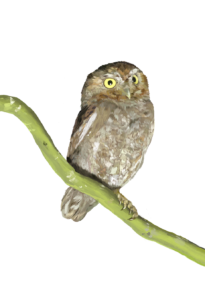
The Elf Owl is the smallest owl in the world and calls the Southwestern United States and much of Mexico home. Along the Lower Colorado River, Elf Owls nest in old woodpecker cavities in saguaro cacti and riparian woodland. They are listed as endangered in California. They rely on cavities previously created by woodpeckers, and therefore need older, more established riparian forests to breed.